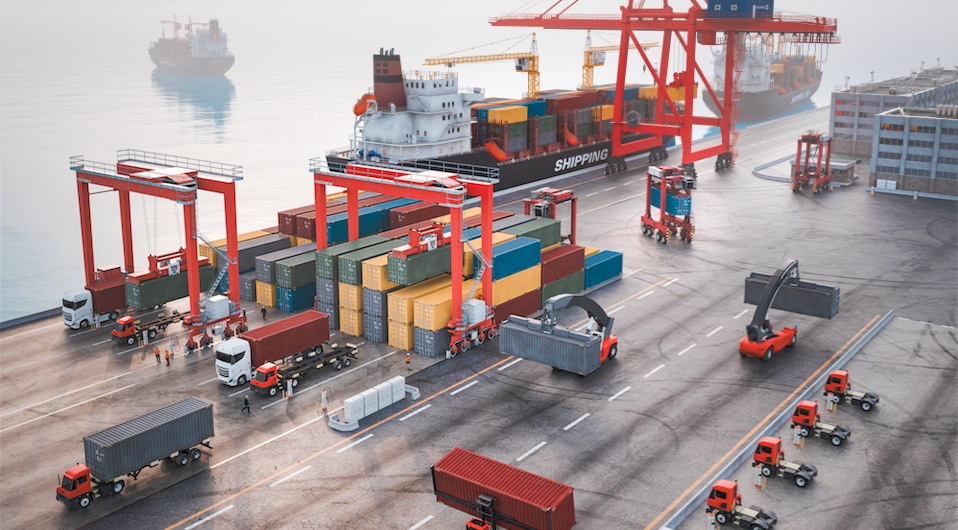Port electrification presents an opportunity in the transition towards zero-emission operations, contributing to CO2 reduction and helping achieve the climate goals of cities where ports are located.
In the port context, Kempower, a leader in electric vehicle charging solutions, operates with a clear understanding that technologies must be designed to meet operational needs and also be scalable for future demands.
But how does it all work?
Ignasi Casas Serra, Sales Manager for Iberia & Latam Commercial Fleets, and Jesse Makkonen, Segment Owner for Marine and Ports, are the Kempower experts addressing this question to Mobility Portal Europe.
Firstly, Makkonen explains that the company currently focuses on electrifying port machinery for container handling (container carriers) and terminal tractors.
“It’s a niche market, but it’s growing rapidly worldwide, also in Spain,” he notes.
These machines are operated by companies now seeking to electrify their fleets as a step towards net-zero emission goals.
However, the benefits for these operators are not only environmental but also economic:
“Electric fleets typically have lower operating costs compared to diesel vehicles,” continues Makkonen, “and these port electrification processes are a reality from Asia to the Americas.”
To undertake such an electrification project, detailed planning is essential, considering each type of machinery, original equipment manufacturers (OEMs), and their specific needs.
“Each OEM has specific requirements, and this must be taken into account to ensure the process is effective, efficient, and sustainable,” says Makkonen, noting how Kempower’s team adapts its solutions to meet these standards.
First Steps to Electrify a Port, According to Kempower
First, scalability of charging infrastructure must be anticipated.
This is already an advantage of Kempower’s hardware, as it allows for modular power upgrades that can increase the power provided as electric fleets expand.
This is key, enabling port operators to begin their electric transition gradually, with charging infrastructure aligned to fleet electrification plans, avoiding upfront over-investment.
Another crucial factor is space saving, which in ports is a particularly sensitive issue due to the high value of every available square metre.
“Our Satellites (chargers) are very compact and can be placed up to 80 metres from the power unit, ideal for terminals with space constraints,” adds Casas Serra. Additionally, Kempower’s satellites are equipped with an exclusive cable support system that facilitates handling, making it ideal for tight installation areas.
The Kempower Power Unit, or central power unit, can power up to 8 satellites and deliver a maximum power of 600 kW.
Its modular design also allows for a gradual increase in the number of power modules (50 kW each), from 1 up to 12 units in a triple cabinet.
Ports are mostly outdoor facilities, so environmental factors play a crucial role in daily operations, especially in regions with extreme climates.
“Our equipment is designed to withstand both the high temperatures of Africa and the harsh cold in Nordic countries, ensuring optimal performance anywhere,” details Makkonen.
Power Requirements and Downtime Management
Regarding power requirements, ports vary widely depending on the type of machinery. Smaller equipment like terminal tractors requires less power, whereas others, like straddle carriers, may need up to 700 amps CCS or MCS solutions, Makkonen explains.
One of the biggest challenges for port operators is managing downtime during charging, as diesel refuelling is typically very quick.
“Now they must consider charging/downtime for machines, which impacts operating costs,” the executive adds.
To address this, Kempower works to optimise this time through software solutions that monitor the charging status and maximise efficiency.
With Kempower ChargEye software, it is possible to streamline energy use and energy consumption in depots, allowing control over these aspects over time.
Vehicle identification and prioritisation further enhance charge optimisation, giving priority to specific vehicles when necessary.
Kempower’s Success Cases
These insights come from Kempower’s experience and specialisation in the port sector.
“In Genoa, we provide a 600 kW power unit with 300-amp satellites for terminal tractor charging,” says Ignasi. This project marks significant progress in port machinery electrification, with more details to come.
Additionally, Kempower is advancing similar initiatives in the UK and Spain, and as more operators join the transition to electric fleets, the adaptability and robustness of the Finnish company’s solutions continue to make a difference.
Casas concludes: “Without a doubt, the future of port electrification depends on scalable, resilient, and tailored solutions like the ones we offer.”








